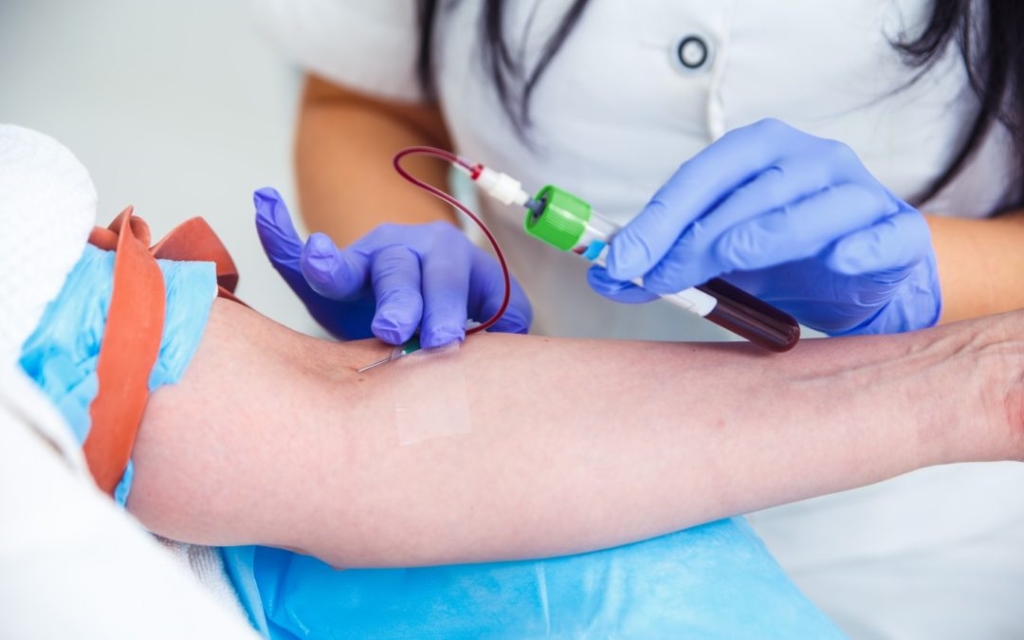**Title: The Role of a Phlebotomist: Job Duties, Training, and Career Opportunities**
**Introduction**
If you’ve ever had blood drawn for testing, you’ve likely encountered a phlebotomist. Phlebotomists play a crucial role in the healthcare industry by collecting blood samples for various purposes, including diagnostic testing, transfusions, and research. In this article, we’ll explore the responsibilities of a phlebotomist, the training required to become one, and the career opportunities available in this field.
**Job Duties of a Phlebotomist**
Phlebotomists are responsible for collecting blood samples from patients safely and accurately. Some common job duties of a phlebotomist include:
1. **Venipuncture**: Performing venipuncture to draw blood from patients for testing.
2. **Labeling and Transporting Samples**: Properly labeling blood samples and ensuring they are transported to the lab for analysis.
3. **Patient Interaction**: Interacting with patients to explain procedures, ensure their comfort, and address any concerns.
4. **Medical Records Keeping**: Maintaining accurate records of blood samples collected and test results.
5. **Infection Control**: Adhering to strict protocols to prevent the spread of infections.
Phlebotomists work in a variety of healthcare settings, including hospitals, clinics, diagnostic laboratories, and blood donation centers. They must demonstrate excellent communication skills, attention to detail, and compassion for their patients.
**Training to Become a Phlebotomist**
Becoming a phlebotomist typically requires completing a phlebotomy training program, which can vary in length from a few weeks to several months. These programs cover topics such as anatomy, medical terminology, blood collection techniques, and infection control. After completing their training, aspiring phlebotomists may need to obtain certification through organizations such as the National Healthcareer Association (NHA) or the American Society for Clinical Pathology (ASCP).
In addition to formal training, phlebotomists must possess certain qualities to excel in their role, including:
– **Attention to Detail**: Ensuring that blood samples are collected and labeled correctly.
– **Empathy**: Being able to put patients at ease during blood draws.
– **Technical Skills**: Mastering venipuncture and other blood collection techniques.
**Career Opportunities for Phlebotomists**
Phlebotomists are in high demand in the healthcare industry, with job opportunities available in various settings. Some potential career paths for phlebotomists include:
1. **Hospital Phlebotomist**: Working in a hospital setting to collect blood samples from inpatients, outpatients, and emergency room patients.
2. **Diagnostic Laboratory Phlebotomist**: Collecting blood samples for diagnostic testing in a laboratory setting.
3. **Blood Donor Phlebotomist**: Collecting blood donations from volunteer donors at blood drives or donation centers.
With experience and additional training, phlebotomists may also advance to roles such as phlebotomy supervisor or instructor. Some phlebotomists choose to further their education and pursue careers as medical laboratory technicians or technologists.
**Conclusion**
Phlebotomists play a vital role in the healthcare industry by collecting blood samples that are essential for diagnosing and treating various medical conditions. To become a phlebotomist, individuals must complete training programs and obtain certification to demonstrate their proficiency in blood collection techniques. With the rising demand for phlebotomists, this field offers promising career opportunities for those interested in healthcare and helping others.
Whether you’re considering a career as a phlebotomist or simply want to learn more about this essential healthcare role, the information provided in this article can serve as a valuable resource. As the healthcare industry continues to evolve, the need for skilled phlebotomists remains constant, making this a rewarding and stable career choice for those passionate about patient care and laboratory sciences.
